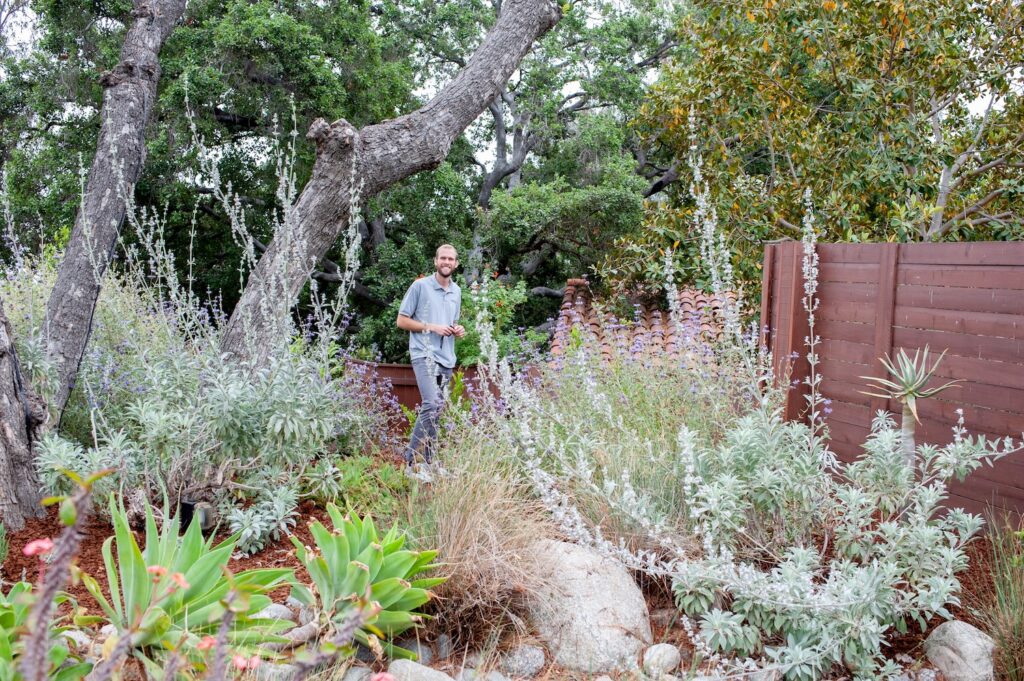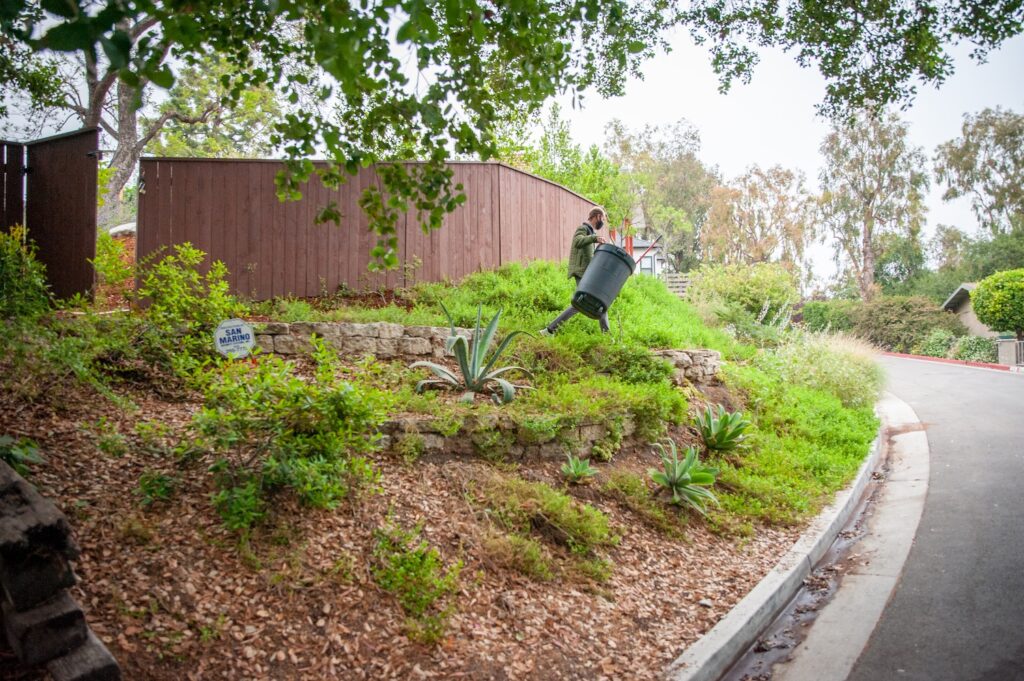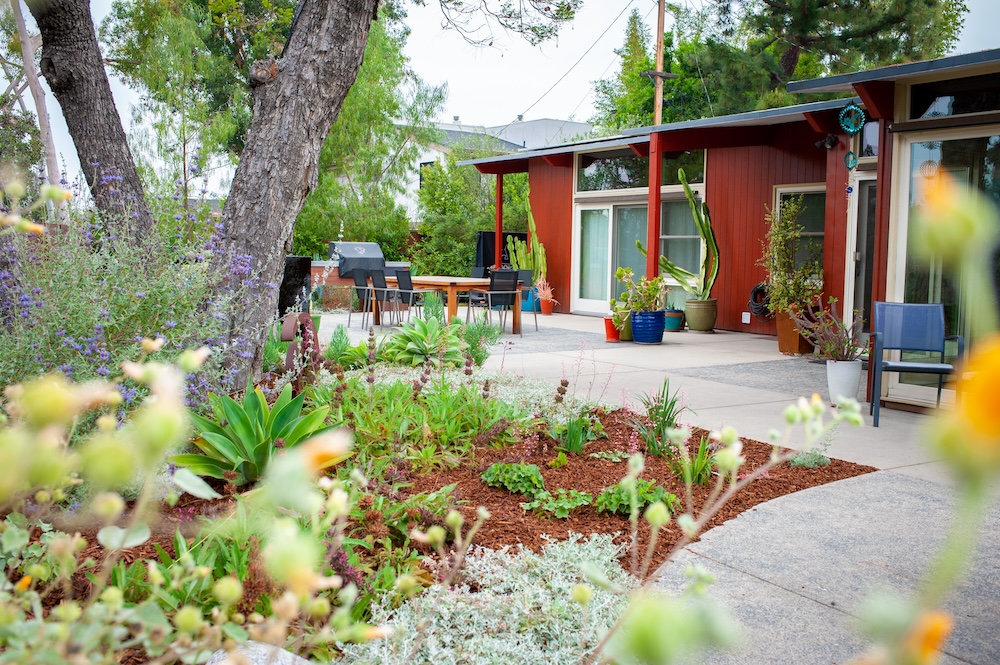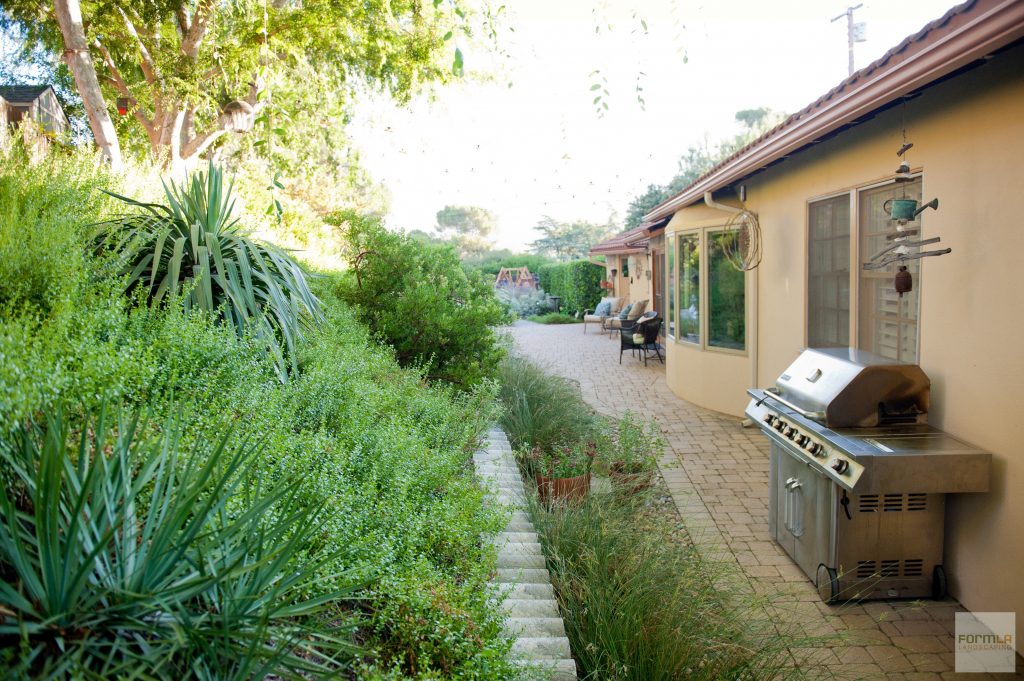Cal Fire’s New Zones Mean New Landscaping Rules for Many Homeowners
March 26, 2025. By JT Wilkinson. This week Cal Fire published new fire hazard severity zones that expanded areas defined as fire-prone by 33 percent. As a result, many more LA-area homeowners and businesses will need to create and maintain defensible space around their structures.
Just what does that mean? That too is changing! This year’s defensible space notices include more specific requirements due either May 1st or June 1st, depending on location. They also foreshadow implementation and enforcement of a requirement to surround homes with 5 feet of ember resistant material. Here is how our maintenance team is responding to these developments.

Ready Defensible Space
We pruned native and non-native foliage in winter to protect foliage health. As a result, our gardens are already free of dead and woody matter. Trees are ready for nests, and plant life has room for spring growth without becoming entangled. To ensure garden compliance with LA County Fire Department’s latest guidance, we will also:
- Prune foliage within 5 feet of structures to lift branches and leaves at least 6 inches from the ground and ensure they also have distance from the structure,
- Inspect trees near access roads for code compliance – and nests, scheduling any needed trims for their next nest-free moment, and
- Relocate foliage that now sits within 3 feet of fire hydrants to other hospitable garden locations.
Beyond what is now required, we now understand even more about what is wise, and we are adapting our practices.

Maintain with Fire-Mindfulness
We take regular actions that fight fire without water. Still, as a result of early insights from LA Fire research and our own in-garden experiments, we may update how we end our maintenance visits. For example, where we can, we will:
- Garbage Cans: Leave garbage cans inside the garage, as they were found to be among the most impactful “connective fuels” during the LA fires,
- Decor: Place cushions, umbrellas, toys and tools in storage, as they are among the most easily ignited materials Angelenos tend to keep in close proximity to our homes, and
- Other Fuels: Move combustible furniture, cooking and storage units to areas distanced from the home, or at least distanced from windows, eves and roof extensions.
In the past, we’ve simply recommended owners take these actions when pre-evacuation notices were issued. They seem simple! Yet, it took 25 volunteers 15 minutes to accomplish these tasks in an exercise we conducted with the Resource Conservation District of the Santa Monica Mountains (RCDSMM) at the petite Fire Resilient Home. We prefer to leave our loved ones as Ready! Set! Go! as possible.



Double Home Survivability
The Institute for Business and Home Safety (IBHS) research indicates a 5-foot ember resistant zone around homes can nearly double home survivability. We think anything with that kind of return on investment is worth doing! Technically, it’s also been required in high fire severity zones September of 2020.
Soon, our local fire departments will have clear guidance for Zone 0 enforcement and associated deadlines from the California Board of Forestry and Fire Protection. Regardless of how those shake out, just 5 steps can make us nearly twice as safe right now. Why wait?
Worried an effective Zone 0 will make for less effective curb appeal? You may find it actually increases it – as well as your enjoyment! We’d happily help you make sure that’s the case.
Sources and Resources
Here are the sources informing our perspective. We hope they are useful resources for you as well.
- LA County Fire Department: 2025 Defensible Space Notices, Ready, Set Go! Guide
- Cal Fire: Fire Hazard Severity Zone Maps and Definitions (Look up your address here.)
- California Board of Forestry and Fire Protection: Zone 0 Working Group Recommendations, Bills and Public Comment Opportunities
- Institute for Business and Home Safety: Zone 0 and LA Fires Presentation, Early Insights from LA Fires, Disaster Discussions | Eaton and Palisades Fires, Part 1 and Part 2
- FormLA Landscaping: Fire-Defensive Landscaping Tips
